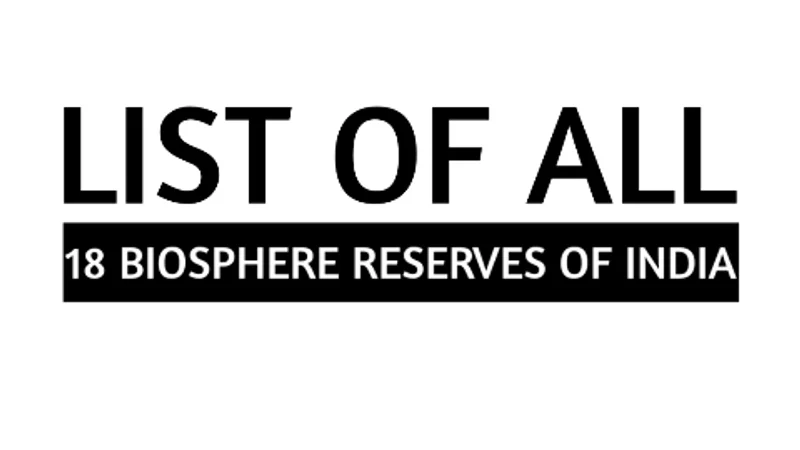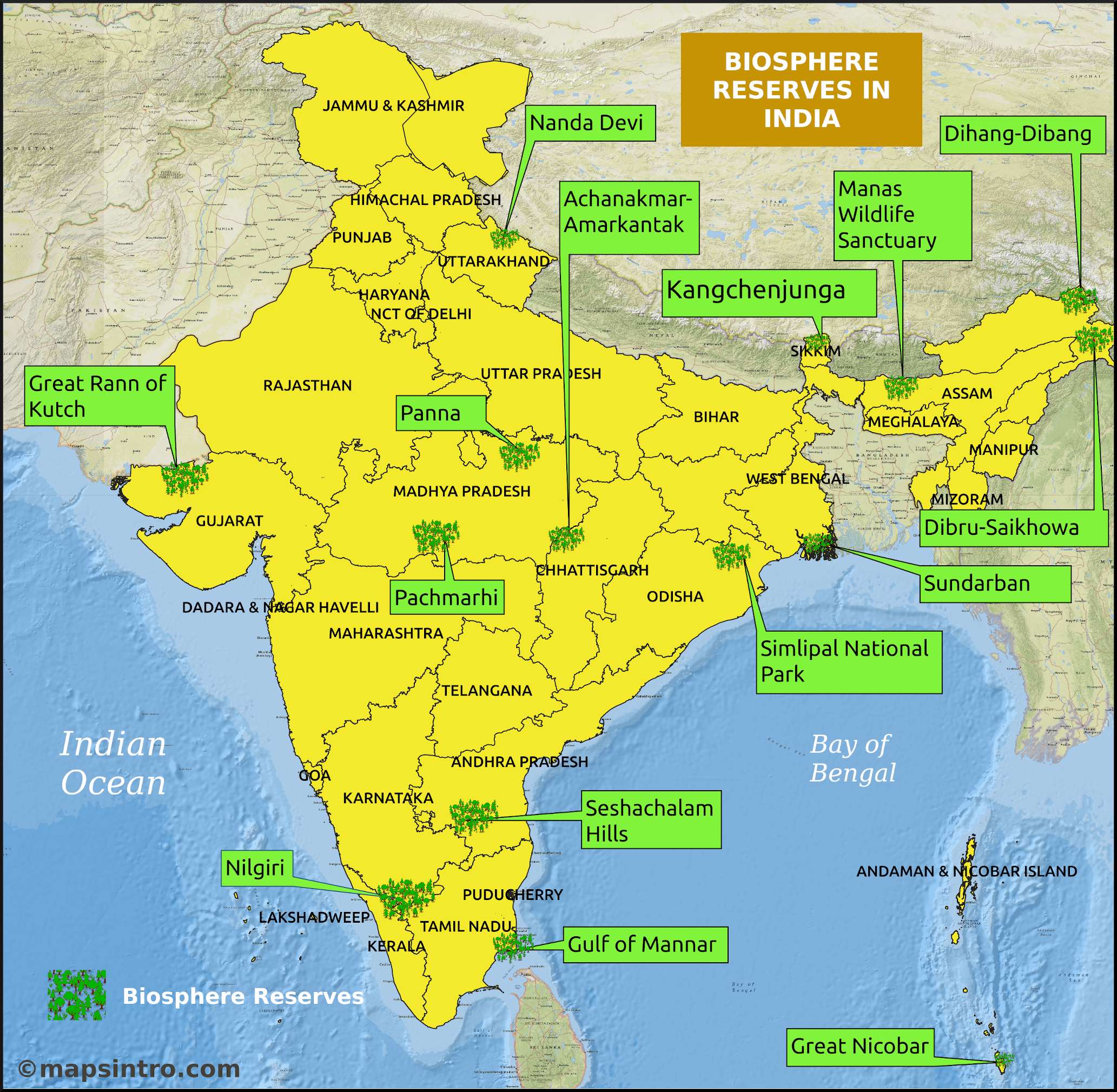
All 18 Biosphere Reserves of India (Updated 2025)
India is home to 18 official biosphere reserves, each representing a unique blend of ecology, wildlife, and sustainable development. These reserves are vital for protecting India’s vast biodiversity while supporting local communities and research. In this post, you’ll find a state-wise and year-wise list of all 18 biosphere reserves, details on UNESCO-recognized sites, and key facts to help with competitive exams like SSC CGL and UPSC.
📘 Read also: All 34 International Airports in India
Table of Contents
- What is a Biosphere Reserve?
- List of All 18 Biosphere Reserves in India
- UNESCO Recognized Biosphere Reserves
- Map of Biosphere Reserves
- FAQs
- Conclusion
What is a Biosphere Reserve?
A Biosphere Reserve is a designated area that promotes the conservation of biodiversity, research, education, and sustainable development. These zones include:
- Core Area (no human activity)
- Buffer Zone (limited human activity)
- Transition Zone (sustainable human activity)
Biosphere reserves are declared under the Man and Biosphere (MAB) program by UNESCO and the Ministry of Environment, Forest and Climate Change in India.
List of All 18 Biosphere Reserves in India
| # | Name | Year | States / UTs |
|---|---|---|---|
| 1 | Nilgiri | 1986 | Tamil Nadu, Kerala, Karnataka |
| 2 | Nanda Devi | 1988 | Uttarakhand |
| 3 | Nokrek | 1988 | Meghalaya |
| 4 | Great Nicobar | 1989 | Andaman & Nicobar Islands |
| 5 | Gulf of Mannar | 1989 | Tamil Nadu |
| 6 | Manas | 1989 | Assam |
| 7 | Sunderban | 1989 | West Bengal |
| 8 | Simlipal | 1994 | Odisha |
| 9 | Dibru-Saikhowa | 1997 | Assam |
| 10 | Dehang-Debang | 1998 | Arunachal Pradesh |
| 11 | Pachmarhi | 1999 | Madhya Pradesh |
| 12 | Khangchendzonga | 2000 | Sikkim |
| 13 | Agasthyamalai | 2001 | Kerala, Tamil Nadu |
| 14 | Achanakmar-Amarkantak | 2005 | Madhya Pradesh, Chhattisgarh |
| 15 | Great Rann of Kutch | 2008 | Gujarat |
| 16 | Cold Desert | 2009 | Himachal Pradesh |
| 17 | Seshachalam Hills | 2010 | Andhra Pradesh |
| 18 | Panna | 2011 | Madhya Pradesh |
UNESCO Recognized Biosphere Reserves
As of 2025, 12 Indian Biosphere Reserves are recognized under the UNESCO’s World Network of Biosphere Reserves (WNBR):
| # | Biosphere Reserve | Year of UNESCO Recognition |
|---|---|---|
| 1 | Nilgiri | 2000 |
| 2 | Gulf of Mannar | 2001 |
| 3 | Sunderban | 2001 |
| 4 | Nanda Devi | 2004 |
| 5 | Nokrek | 2009 |
| 6 | Pachmarhi | 2009 |
| 7 | Simlipal | 2009 |
| 8 | Achanakmar-Amarkantak | 2012 |
| 9 | Great Nicobar | 2013 |
| 10 | Agasthyamalai | 2016 |
| 11 | Khangchendzonga | 2018 |
| 12 | Panna | 2020 |
Map of Biosphere Reserves
Here’s the map of all 18 biosphere reserves of India:

FAQs
🔹 How many biosphere reserves are there in India in 2025?
There are 18 biosphere reserves officially declared in India as of 2025.
🔹 Which is the first biosphere reserve of India?
The Nilgiri Biosphere Reserve, declared in 1986, is the first biosphere reserve of India.
Which was the last biosphere reserve in india?
The last biosphere reserve in India was Panna biosphere reserve, which was added in 2011.
🔹 Which biosphere reserve was last added in India?
Panna Biosphere Reserve in 2011 was the last declared reserve.
🔹 How many biosphere reserves of India are recognized by UNESCO?
A total of 12 biosphere reserves are recognized by UNESCO under its MAB program.
🔹 What are the zones of a biosphere reserve?
Every biosphere reserve has three main zones:
- Core Zone – strictly protected
- Buffer Zone – research and education allowed
- Transition Zone – human settlements and sustainable activities
Conclusion
Biosphere Reserves play a critical role in conserving biodiversity while promoting eco-friendly development. Knowing their names, locations, and year of establishment is helpful for students preparing for SSC, UPSC, Railways, and State PSC exams.
Stay tuned to Eduware for more updated educational resources and static GK!